Terry purslane: small, but big!
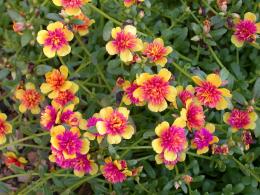
In the flowerbed at the foot of the narcissistic tall flowers, which rightly consider themselves the adornment of any garden, discreet purslanes modestly lurk. The climbing stems of these unpretentious plants cover all available soil with a thick carpet. And suddenly, at the very beginning of summer, a bright fireworks display of miniature beautiful flowers flashes above them.
Content:
general information
In Europe, purslane began to be grown at the beginning of the last century. It came to us from Latin America and in our latitudes is known as an annual. Terry purslane is a low-growing plant of the purslanaceae family. It reaches a height of about 20 centimeters.
The fleshy leaves and stems of purslane give the impression of a very delicate plant. Its branches are light green, in places with a purple tint, and creeping. Its roots are spindle-shaped and branched.
The terry purslane flower does not form an inflorescence; its diameter reaches almost 7 centimeters. It consists of several balls of petals, so it resembles tiny rose or peony. This ornamental plant produces a fruit-box with a huge number of seeds.
Those who decide to plant purslane in their flower garden will not regret it. After all, this plant, undemanding to conditions and care, is distinguished by its exquisite beauty.
Clinging to every piece of soil, purslanes allow the gardener not to worry about the fact that some part of his flowerbed is empty.This often happens when a new area reserved for flowers is just settling in: perennials did not have time to grow sufficiently, and annuals for some reason did not take root - due to poor-quality seeds, seedlings or lack of moisture.
Terry purslanes begin to bloom in June and do not stop until frost. Since this plant is very drought tolerant, it is often used as a balcony plant, planted in long narrow containers around the perimeter of the balcony or in hanging pots. Purslanes decorate alpine hills, where their properties are especially appropriate.
Beginning flower growers may be upset that the very first flowers open only for one day, and disappear by the second. But after the start of continuous flowering, the short period of existence of one flower will become invisible: flower bed The whole summer will look extremely elegant.
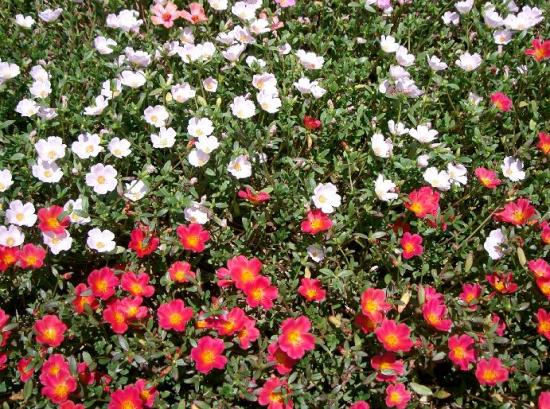
Mixtures of double purslanes produce a variegated flower garden. Not many flowers are given such an abundance of colors. Some purslane bushes produce porcelain-white blooms, while roses with yellow petals bloom nearby. Scatterings of red, orange, crimson and pink flowers cause genuine delight. But flowers with spotted petals and variegated stains are already a complete sensation.
In our climatic conditions, the following varieties of terry purslanes are most common:
- Flamenco - distinguished by an abundance of shades
- Pun – resembles a rosebush
- Sunglo - the largest flowers
- Mango - coral-orange flowers
- Hybrid Cream - cream flowers, dark in the center, the diameter of which exceeds 4.5 cm.
It’s simply impossible to list all the benefits of terry purslane. All that remains is to start growing it!
Reproduction
The easiest way to propagate purslane is by seeds. They are quite small: there are about 12 thousand pieces per gram. Therefore, for sowing at the very beginning of spring, they are scattered directly on the surface of the soil freed from under the snow. To protect from spring frosts, the crops are covered with film.
For growing double purslanes in more northern latitudes it is used seedling method with sowing seeds in pots in February. Seeds can be mixed with sand - 1 to 4, so that they are distributed and germinate more evenly.
Glass is placed on top of the pot and placed in a place well lit by the sun.
The temperature should be moderate, at least 17°. Under normal conditions, purslane shoots appear within a week. It is advisable to moisten the soil under tender seedlings with a spray bottle. But you should avoid overmoistening the soil. To avoid stretching of sprouts and to harden the plants after sprouting, the room temperature must be lowered at night.
Seedlings can be pruned to give more space to the sprouts. Removed plants can be immediately planted in a box with soil, because they will withstand replanting quite firmly. Purslane seedlings can be placed in a permanent place at the end of April - mid-May, when there is no threat of frost. It is important to maintain the optimal distance between sprouts - about 15 centimeters.
If it suddenly happens that the first shoots disappear, then do not despair: you can sow purslane at a later time, even in May, by covering the soil with film. Shoots will appear very quickly. Half a month after germination, the bushes, which resemble small Christmas trees, can be transplanted to a permanent place in the flower garden. At the age of about 6 weeks, strong buds will appear above the developed plants, and after another week they will bloom.
A very common way to propagate terry purslane is to dig up part of the flower mat in a flower bed and replant it in a new place. You can also purchase seedlings of this plant, which will also take root painlessly and will decorate the entire flower garden for a long time.
Moreover, next year flower growers will have a surprise: these resistant plants During the season they are sown in the ground and spring up in spring. Not a plant, but a find!
Care
For normal growth, purslane needs a permanent place, and not a corner for one season. The only important aspect of caring for it is removing weeds. You can break through the seedlings a little so that they do not oppress each other and the purslane grows more luxuriantly.
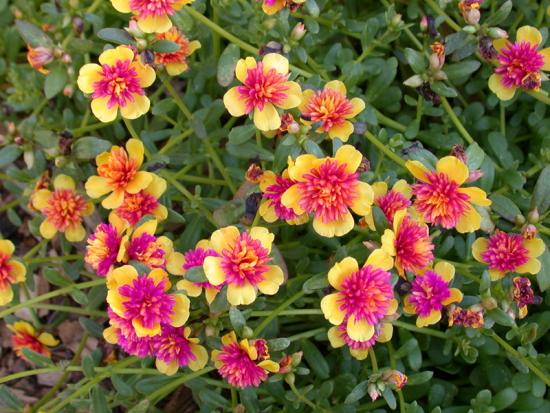
After sowing purslane, it is important not to miss the moment of emergence of seedlings and not to disturb them by loosening the soil. Due to the fact that the first shoots are very tiny, you can simply not notice them and consider that the plant has not sprouted. However, usually purslane still sprouts, and very quickly at that.
However, it is important for him to have enough warmth and sun. Therefore, flower beds or balconies where it is planned to sow purslane must be well illuminated by the sun, because it will not be able to fully develop and bloom in a shaded place. At the same time, its branches become thinner, elongated and become unattractive.
Purslane needs systematic watering. This is especially important before emergence and during dry times. But from excess moisture, purslane can get wet and disappear completely.
As for the soil, terry purslane is almost indifferent to it: wherever it is planted, it will grow there. But on heavy, wet soils the plant will develop poorly. Soils that are too enriched with fertilizers lead to the formation of abundant greenery and weakening of flowering.Therefore, purslane is indispensable for sandy soils with a large number of stones of different diameters.
The advantage of purslane is that it is resistant to pests and diseases. It is extremely rare that plants can be infected by the fungus Albugo portulaceae, which causes spots to appear on their leaves and the shoots to become deformed. Diseased stems should be discarded, and the remaining plants should be sprayed with copper sulfate.
Terry purslane flowering on video:
Interesting information about the vegetable garden


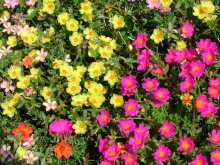

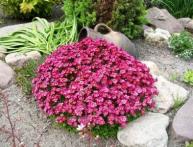
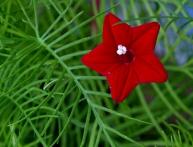

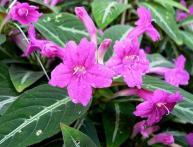
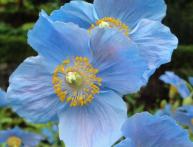
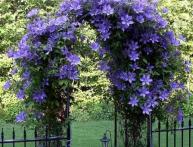
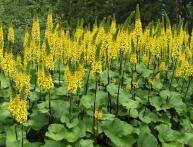
Comments
I am simply in love with these flowers - they are so bright and joyful! They look so beautiful in the city - they simply cover the flower beds with a carpet. But I can’t grow purslane from seeds - the sprouts quickly die.
I bought a small bush at the market, and now in 3 years my clearing has grown. Beautiful!
Wonderful flower. Previously, I grew the most ordinary one, but recently I bought a terry one and it became the decoration of the flowerbed in the foreground.